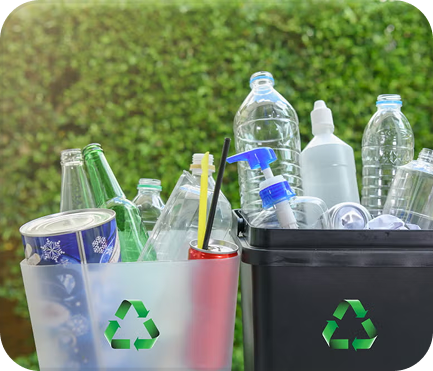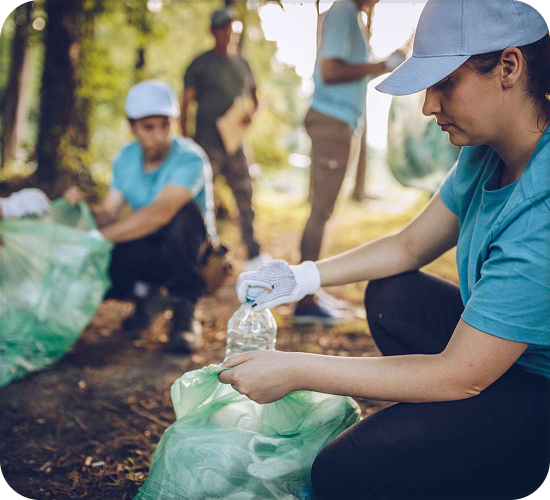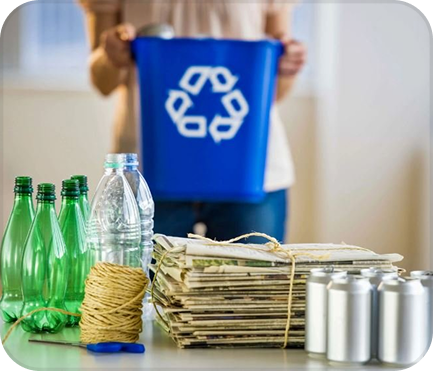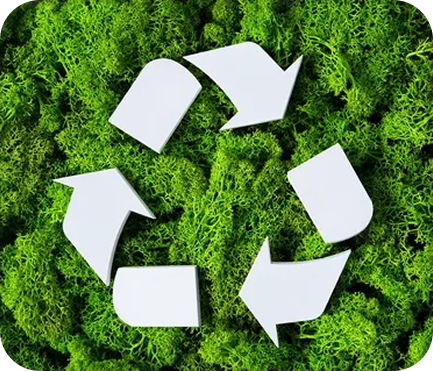Plastics


Plastics
There are two themes on the plastic page: (1) recycling and the recyclability of plastics; and (2) design for recycling. Plastic made from fossil fuels and bio-plastics are manufactured from primary raw materials. The responsible disposal, collection and reprocessing of all types of plastics should lead to improving resource management.
We, mistakenly, consider end-of-use-cycle plastics as ‘waste’ when in fact we should be asking How can we better manage our finite resources? Most of the plastic in use today is derived by the following steps:
In a Linear Economy, most of the energy used goes into extracting and processing natural resources and not in the actual manufacturing of products. By reusing products, we replace energy consumption with labour resulting in energy savings and job creation.
2. Refining process transforms crude oil into different petroleum products – these are converted to yield useful chemicals including “monomers” (a molecule that is the basic building blocks of polymers). In the refining process, crude oil is heated in a furnace, which is then sent to the distillation unit, where heavy crude oil separates into lighter components called fractions. One of these, called naphtha, is the crucial compound to make a large amount of plastic. However, there are other means, such as using gas.
Plastic, polymeric material that has the capability of being molded or shaped, usually by the application of heat and pressure. This property of plasticity, often found in combination with other special properties such as low density, low electrical conductivity, transparency, and toughness, allows plastics to be made into a great variety of products.
These include tough and lightweight beverage bottles made of polyethene terephthalate (PET), flexible garden hoses made of polyvinyl chloride (PVC), insulating food containers made of foamed polystyrene, and shatterproof windows made of polymethyl methacrylate.

Types of Plastic Recycling
There are three main types of plastic recycling: (1) mechanical recycling; (2) chemical recycling and (3) dissolution recycling. As we move towards improving resource management around the world, understanding the differences between the types of recycling will become increasingly important. As no system is perfect, and a diverse range of recycling processes will evolve as each provides different functions within the recycling ecosystem.

Chemical Recycling

Mechanical Recycling

Dissolution Recycling
The Use of Additives in Plastics
According to the American Chemistry Council “When plastics emerge from reactors, they may have the desired properties for a commercial product or not. The inclusion of additives may impart to plastics specific properties. Some polymers incorporate additive during manufacture. Other polymers include additives during processing into their finished parts.
Additives are incorporated into polymers to alter and improve basic mechanical, physical or chemical properties. Additives are also used to protect the polymer from the degrading effects of light, heat, or bacteria; to change such polymer processing properties such as melt flow; to provide product color; and to provide special characteristics such as improved surface appearance, reduced friction, and flame retardancy.”
Types of Additives:
Antioxidants: for plastic processing and outside applications where weathering resistance is needed
Colourants: for coloured plastic parts
Foaming agents: for expanded polystyrene cups and building board and for polyurethane carpet underlayment
Plasticizers: used in wire insulation, flooring, gutters, and some films
Lubricants: used for making fibres
Anti-stats: to reduce dust collection by static electricity attraction
Antimicrobials: used for shower curtains and wall coverings
Flame retardants: to improve the safety of wire and cable coverings and cultured marble
Hundreds of chemicals with known toxicity to humans and the environment are widely used as additives in plastics. The average consumer’s knowledge of what goes into plastic products is not sufficient to make informed choices about exposure. The data collection needed to make these choices often does not exist, especially for recycled products made of mixtures of existing plastics. Though data on the toxicology of single additives in isolation may be available, there is very little data on the interaction of multiple additives in real world situations, either within a single product or between many products in a single place.
Definition of Recycling
A global definition of “recyclability” of plastic packaging and products is an integral step to harmonising the worldwide plastics recycling industry. This definition does not intend to restrict innovation. For innovative materials to be recyclable, it shall be demonstrated that they can be collected and sorted in sufficient quantities and are compatible with existing industrial recycling processes or have sufficient material quantities to justify operating new recycling processes.
Plastics must meet four conditions for a product to be considered recyclable:
1 – The product must be made with plastic that is collected for recycling, has market value and/or is supported by a legislatively mandated program.
3 – The product can be processed and reclaimed/recycled with commercial recycling processes.
The Institiute for Molecular Science and Engineering at the Imperial College London published several policy recommendations (November 2023), which CEA supports. For cleaner production and recycling of plastics to become realistic, policies are needed to improve the quality of the first-time production of goods, as all materials containing toxic substances in a recycling stream undermine the quality and safety of the recyclate. Therefore, separate targets are required for production/recovery streams without toxic components, in addition to streams that are likely to be contaminated with toxic chemicals.
Recyclass
Plastic Recyclers of Europe set up Recyclass, which is a comprehensive cross-industry initiative that advances plastic packaging recyclability and ensures traceability and transparency of recycled plastic content in Europe. RecyClass works on the development of scientific testing methods for innovative materials.
The testing results are incorporated into the Design for Recycling Guidelines and the free RecyClass Online Tool. In parallel, RecyClass developed a system for reliable calculation and verification of recycled content in plastic products. The scheme relies on the principles of traceability and transparency.
References:
Definition of Plastic from Brittanica, written by Ferdinand Rodriguez, fact-checked by The Editors of Encyclopaedia Britannica, last Updated:
Definition of Recycling from The Association of Plastics Recyclers (APR) and Plastics Recyclers Europe (PRE) in 2018
‘How Is Plastic Made? A Simple Step-By-Step Explanation‘ by Author: Dr Payal Baheti, published by the British Plastics Federation
References:
‘Addressing Plastic Additives‘ by Arturo Castillo Castillo, Kieran Brophy and Isabella von Holstein. Published by the Institiute for Molecular Science and Engineering, Imperial College London, November 2023
Plastics image: photo3idea_studio from Flaticon
Molecules images: Freepik from Flaticon
Recycling image: Freepik from Flaticon
Dissolution Recycling: Smashicons from Flaticon





